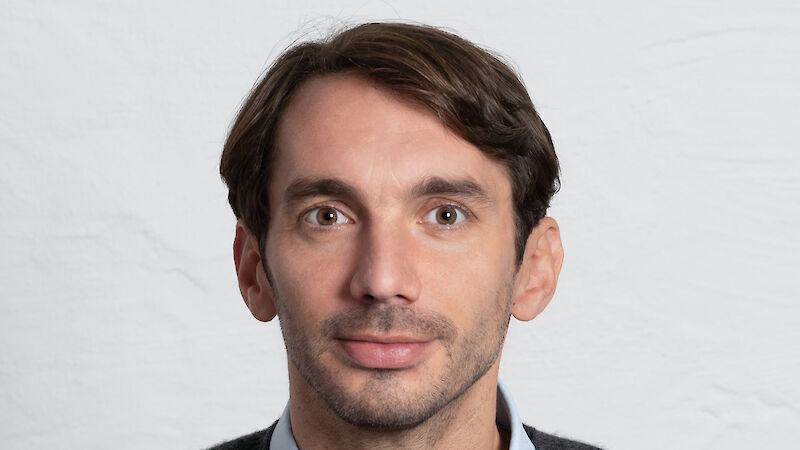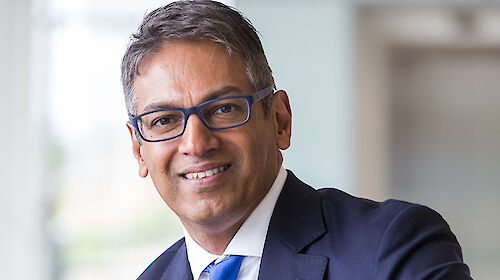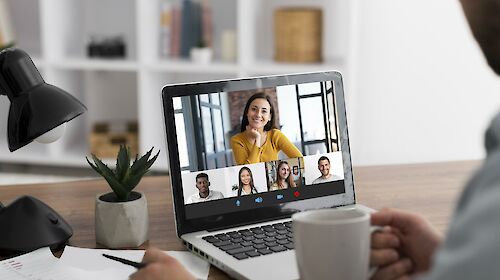"We have to realize: Digital is different"
GCB FutureTalks #20 with Tom Renneberg, CEO of esanum GmbH
 © Tom Renneberg / esanum GmbH
© Tom Renneberg / esanum GmbH
Tom Renneberg, CEO of esanum GmbH, has recently spoken with Matthias Schulze to discuss ways to boost the success of digital event formats and how to activate virtual audiences. esanum was launched as an online community for medical doctors in 2007. Reaching 370,000 members, it is one of Europe's largest social networks for medical professionals.
Matthias Schultze: esanum started as an online portal for medical doctors in 2007 and evolved into a professional networking platform that provides congress reports, eCMEs and congress apps. How did COVID-19 affect you?
Tom Renneberg: The cause of esanum is connecting medical doctors across Europe and providing them with information and education. The digital part of that makes 99% of our DNA. Over the last 15 years we have built and rebuilt our infrastructure based on that DNA.
We are constantly looking for new ways to capture the attention of medical doctors, prolonging their time on our page, increasing their number of clicks and the information they can find and consume within our digital world.
For that very cause the pandemic has had a positive effect, because consequently digital services such as ours have seen an influx in users, attention, clients and partners.
The pandemic has also brought my team of over 100 people closer together digitally. While we have always worked and collaborated from practically anywhere through online tools, our headquarter in Berlin has always played a very central role.
During lockdown we adapted to leaving that central part out entirely, though. A big challenge when doing that is to keep the company culture alive - the coffee breaks, informal chats, the feeding of the office chicken or having an after-work drink together. These things cannot be achieved through Zoom and Slack.
It hurt me to see our beautiful office space completely deserted. That is why we converted the biggest space into a TV-Studio for webinar live streams. We adapted very quickly to the changed user needs and learning habits and all formerly physical events were offered as digital livestreams right away.
All of a sudden, everybody was asking for them - and our community still does. We started a live series for the biggest group of medical doctors, General Practitioners, on how COVID19 was affecting them. An expert panel of doctors had a discussion on that and was taking questions from an audience of over 4,500 viewers in the first show. That number also highlights one of the biggest effects COVID19 has had on us: Never before did we have 4,500 live webinar viewers on the esanum plattform at the same time.
Most of the adjustments that we had to make - and are still in the process of making - concern our live events. We are organizing our own little congresses - 10 in a regular year with 2,500 medical doctors attending in total. These events are CME certified with a scientific program and sponsors are looking to connect with the attendees.
It was relatively easy to move the scientific program online. Getting material from our sponsors online was a home run, too, because that is precisely what we have been doing for the last 15 years. All our products, communication tools and technologies are built around that. What did pose a significant challenge, though, was how to initiate and facilitate a real and meaningful exchange between a sponsor and an attendee online. I am open for ideas on that.
Many event organizers are asking themselves how they can make online events profitable. How must ticket prices be calculated and can the price of an online event be as high as that of a face-to-face event?
Although certain costs such as location fees, catering etc. do not arise digitally, you can still culminate the same high costs for a well-produced digital event with speakers' fees, interactive tools, state-of the art technical equipment and so on. We feel the quality of the production has become more important than ever amidst the digital event overflow.
Which indicators can be used to measure an online event's success?
We use the standard online KPIs with unique visitors (attendees), returning visitors or viewers, time spent in session during the online event and bounce rates during the online event.
We also measure the engagement by analyzing the comments, questions and live voting as well as looking at the number of downloads of complementary material.
On top of that we display the website traffic metrics on the event's landing page and related pages as well as the registration numbers for consecutive episodes.
Many event participants have experienced a shorter attention span as well as more distractions when attending online events. With your extensive background in managing an online community and creating online events: What strategies should be pursued to counteract these tendencies and boost an online event's success?
We have to realize: digital is different.
Digital consumption habits need to be taken into account, especially in two dimensions: content (consumption) and community building.
As for content: Regardless of whether online or offline, the following always applies: content first. This means that the content itself is usually the decisive factor for success. In the digital context, however, the preparation of the content for digital consumption is extremely important.
Content must be optimized to fit into this context: digital and mobile first. This includes standards such as optimized video formats for mobile phone screens, or the automatic integration of subtitles for videos that are watched on the go. That's important because users tend to watch with sound on the desktop and less so on mobile phones.
Community building: Communities work differently digitally than offline. Digitally, certain aspects of communication, such as body language, are often significantly weaker, but they are important for building relationships. How can this be implemented digitally? Video formats, emotional reactions such as emojis and very good sound and image quality are among the tools needed to generate an authentic and engaging viewing experience.
Secondly, interaction in communities is a crucial factor. Oftentimes digital events are only one-sided and viewers are only looking at what the organizers are broadcasting.
Our team at esanum is always looking at ways to build formats that promote engagement, though. This can be achieved through live voting and live questions, for example. We make it clear to our viewers that they can participate, which also supports our community building and bonding.
Therefore, an event's success does not only rely on the content itself, but also on the extent to which organizers can cater to the audiences' desire to engage within the community.
However, as mentioned above, we are still working on new ways to translate real life situations like the conversation during a joint coffee break into the new digital setting.
More information on esanum can be found on their website, LinkedIn or Twitter.
 ©
© ©
© ©
© ©
©